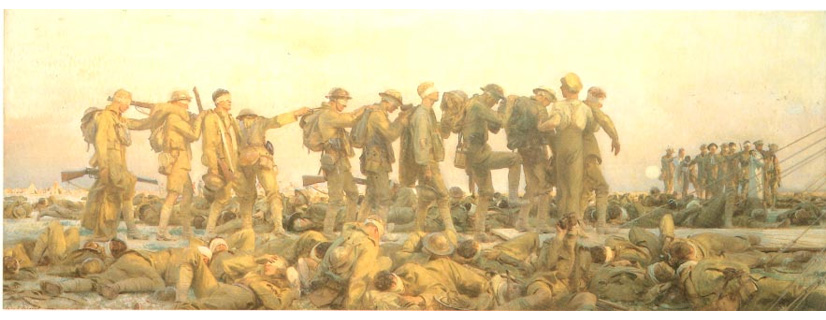To mark Remembrance Sunday, this week’s picture is John Singer Sargent’s monumental depiction of British soldiers suffering the effects of a mustard gas attack during the Great War. The work, to which the artist gave the stark and prosaic title Gassed, is on display at the Imperial War Museum in London.
In the spring of 1918 Sargent was approached by the Ministry of Information to paint a large-scale war picture, to be the centrepiece of a projected Hall of Remembrance. On 2 July he departed for the Western Front with his friend and fellow painter Henry Tonks. Sargent, who was the foremost society portraitist of his day, may have seemed an unlikely choice of war artist. He has often been cast as a relentlessly superficial painter, but (as his friend Henry James noted) there was always an ironic edge to his personality. He had a sharper and more critical intelligence than he has generally been credited with; and Gassed is impressive proof of that.
Because he was an American living in England, it was thought Sargent should commemorate the Anglo-American military alliance. But as he and Tonks drove deeper and deeper into the killing fields of northern France, he realised that it would be hard enough to find any appropriate subject for a monumental painting. “The more dramatic the situation,” he wrote, “the more it becomes an empty landscape. The Ministry of Information expects an epic – and how can one do an epic without masses of men? Excepting at night I have only seen three fine subjects with masses of men – one a harrowing sight, a field full of gassed and blindfolded men…”
The event that he decided to commemorate took place between Arras and Doullens on 21 August 1918. The Germans had put down a mustard...


